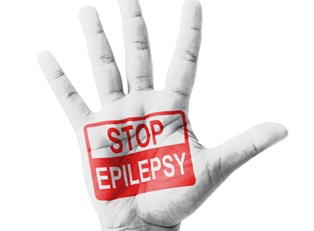Epilepsy, a chronic neurological disorder characterized by recurring unprovoked seizures, affects more than 3 million people in the U.S., according to the National Institutes of Health (NIH). There is no cure for epilepsy, but there are several treatment options available that make a seizure-free life possible.
Epilepsy is usually managed under the care of a neurologist, a physician specializing in neurological conditions, or an epileptologist, a neurologist who specializes in epilepsy. The following treatments are available for managing your seizure disorder:
Medication
Probably the first thing your doctor will prescribe is seizure prevention medication, or anti-epileptic drugs (AEDs). According to the Cleveland Clinic, medications can control seizures in about 70% of patients. Many patients after being seizure-free for a period of time may be able to slowly wean off medications. Epilepsy has a great deal of stigma attached to it, and patients may experience depression or anxiety as a result. Other medications such as antidepressants may be prescribed to offset psychosocial effects of having epilepsy.
Surgery
Due to the risks involved with surgery, it is usually only an option for patients with a one- to two-year history of uncontrolled seizures. Still the source of the seizures must be identifiable, so usually only those with some type of partial epilepsy are candidates, and even then the benefits must outweigh the risks involved. The most common surgery is a resection, or removal, of the problem area. By removing the area, the epilepsy is said to be surgically cured.
Another type of surgery involves disconnecting communication pathways in a certain area from the rest of the brain so that the irregular impulses cannot spread. This type of surgery is more common when the area responsible for the seizures is too critical to remove. Disruption surgeries are said to provide relief but not cure epilepsy since the source still remains.
Vagus Nerve Stimulation Therapy
Device implantation options are a growing area in epilepsy treatment. Vagus nerve stimulation (VNS) therapy involves setting a battery-like device, about the size of a half dollar, under the skin on the left side of the chest. The VNS device, which can last five to ten years, is programmed by your neurologist to send regular impulses to your brain via the vagus nerve.
Ketogenic Diet
A diet high in fats and low in carbohydrates, called a ketogenic diet, has been found to help control seizures. Usually the ketogenic diet is only recommended for children with uncontrolled seizures. Since adequate nutrition is a concern for children on this diet, it should be overseen by the pediatric neurologist and a nutritionist.
Alternative Treatments
When patients struggle to find seizure relief, some turn to alternative methods to compliment their medical care such as: acupuncture, chiropractic therapy, nutritional supplements, and meditation or relaxation practices. More research is needed to determine whether these methods adequately and safely provide seizure control and may not be approved by the Federal Drug Administration.
As more states pass legislation to approve the use of medical marijuana, patients with uncontrolled epilepsy may have yet another option. On the organization's website, “The Epilepsy Foundation supports the rights of patients and families living with seizures and epilepsy to access physician directed care, including medical marijuana.” The foundation calls for "the inclusion of epilepsy as a condition that uses medical marijuana as a treatment option where it is currently available.”



